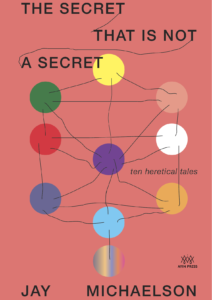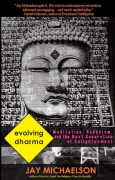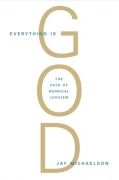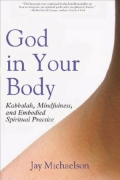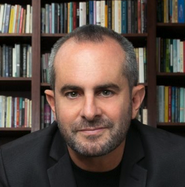From God in Your Body: Eating
You will eat, you will be satisfied, and you will bless YHVH, your god
Deuteronomy 8:10
In almost every contemplative tradition, eating is regarded as a sacred act. From one perspective, consuming food is simply a necessity of the body—everyone must eat in order to survive. But eating can also be a deeply spiritual practice, with many layers of meaning. To the ancients, who did not know about ATP, proteins, and sugars, it was mysterious, and inspired gratitude, myth, and ritual. They saw it as a metaphor for the uniting of self and other, for receiving sustenance from a heavenly source, and as a primary social bond. Even today, there is something miraculous about turning lettuce into “me,” and the many layers of social and ritual meaning endure even in our generally de-ritualized society. Moreover, thanks to the way all of us can experience nourishment, eating can focus the attention, calm the mind, and delight the heart and body. Precisely because it is a mundane, necessary act, it awaits and invites elevation.
It makes sense that a Jewish book about the body starts with eating. Jews have complicated relationships with food. On the one hand, the Jewish tradition celebrates eating, and sanctifies its delights. On the other hand, there are all those fast days, and all those restrictive dietary laws. Moreover, Jews really like to nosh—and sometimes not in the most “mindful” way either. Think of a traditional Jewish wedding—the carving board, the pasta bar, the mountains of pareve desserts—or our many meals spent arguing, shouting, even talking on the telephone. Who has time to sit quietly and be thankful?
Now, I don’t want to put down eating on the run. I lived for many years in New York City, where doing so has become a kind of art. But it is possible, even in the midst of a rush, for a meal to be more than just the ingestion of proteins and carbs. To do so requires a practical, as well as theoretical, orientation. Put Kabbalah into a distracted and busy mind, and all you’ll get are more concepts. But put into a quieted mind, true kabbalah—receiving, of the Divine Light within—can take place. As the prophet Isaiah says, “Pay attention to Me, and you will eat that which is good, and enjoy the delights of your soul.”
V’achalta: Eating Meditation
The foundational teaching for this chapter is the Torah’s injunction “to eat, be satisfied, and bless YHVH your God for the good Earth†–in Hebrew:

V’achalta, v’savata, u’verachta et Adonai eloche’cha
Notice first how these words honor the act of eating. Eating is not a necessary evil, something we do because we have to sustain our bodies; it is holy. The talmudic sages teach that the dinner table is like the altar in the Temple, and the meal we eat like the offerings that brought us close to God. (The Hebrew word for such offerings, korbanot, comes from the same root as l’karev, to be brought close. Rather than ‘sacrifices,” a better translation might be “joiners” or even “unifiers.”)
Second, notice the order of the pasuk, as if only after one has eaten, and been satisfied, can one really make a blessing. Experience matters. And notice that the verse contains all four worlds within it: the body (eating), heart (satisfied), mind (the reason for the blessing), and soul (the blessing itself). But the body comes first.
Eating is simple, but eating in a way that really fulfills the commandment to “eat, be satisfied, and bless” takes a certain amount of subtraction—slowing down, quieting down, cutting down the noise of an impossibly rushed life. Technology has met nearly all of the material desires of a century ago—but left intact the spiral of desire itself, with a frenetic consumer culture all too eager to keep us spinning. We now have vastly improved means for unimproved ends. If we are not happy, we have more choices than ever of something to do, or get, or consume. Yet every philosophical and religious tradition, from Epicurianism to Judaism to Taoism, stresses the opposite move: slowing down desire itself enough to enjoy simple pleasures. Instead of the yetzer, desire, causing more and more suffering, all these traditions say that one who is truly rich is happy with what is. Simple, even banal, when put into words, but not so easy to do in practice.
This is important not only for happiness, but also for truth. William S. Burroughs, not usually regarded as a spiritual teacher, said that he wanted to capture the “frozen moment when everyone sees what is on the end of every fork.” In other words: to see truth clearly, in all its beauty or terror — not a delusion, but rather its erasure; not a balm but the unvarnished reality of experience. But how do we do this, literally or figuratively, when we’re busy distracting ourselves?
Perhaps in a slower time, it was easy to fulfill the mitzva of v’achalta, v’savata, u’verachta. The pace of life allowed for more enjoyment—and besides, food was more scarce, and thus more precious. Today, however, to eat in this way requires what many contemporary teachers call “mindfulness,” but which we might simply understand as seeing clearly whatever is actually happening, rather than being distracted by racing thoughts or the chattering of the television. The mechanics of this practice come from the Buddhist world, not the Jewish one, although there are Jewish injunctions to meditate while eating — for example, the Darchei Tzedek’s statement that “The main service of God is through eating … and the tzaddikim meditate as they eat, in love and fear of God, as with prayer.†Only by slowing down, however, can we really understand what the Jewish texts are saying. Experience first, and then the concepts can come alive. As the teacher and writer Eckhart Tolle said (on Oprah, no less), it’s just about asking “What is happening right now—and can I be with it?”
To experience “What is happening right now” in your body, you can try this simple eating meditation for a whole meal, or five minutes—or even just a single bite. I find a bit of fruit or vegetable is good, though I often teach this practice with a potato chip—really, almost anything works. Here’s how to do it:
1. First, spend a little time considering the food before you put it in your mouth. Use the kabbalistic map of the “four worlds,” which roughly correspond to body, heart, mind, and spirit, to help you. On the level of the body, you might gaze at the food with focused attention, or even, if appropriate, feel the food with your fingers. What does it feel like, or look like? Allow yourself the pleasure of being entranced by this object—most food is quite beautiful, in its detail—as if you’re giving yourself a miniature spiritual retreat, right now, at your lunch table. You might smell the food too, and notice what effects doing so has on your body.
2. “Check in” next with the heart. What desires are you experiencing? Are you hungry? Nauseated? Thankful? Do you think this practice might not be for you? Whatever the “feeling-tone” of this experience is, just note it attentively, without judgment; stay with it for a couple of breaths, and see if it shifts, or intensifies, or ebbs.
3. On the plane of the mind, consider for a moment all of the people involved in bringing this food to you. Farmers, truck drivers, factory workers, storekeepers—there are hundreds, if not thousands, of people whose labor created the simple occasion of this food arriving in this moment. Take a moment to consider them; imagine what they look like, how hard they are working to support themselves and their families, the economic system that creates the conditions for their labor.
4. And, on the level of the soul, consider all the conditions necessary to have created this food. The four elements of fire (sun), water, earth, and air; the genetic information in the plants or animals, part of the Divine wisdom (chochmah); ecosystems and molecular biology beyond our understanding. Consider, in Thich Nhat Hanh’s words, all of the aspects of the universe which “inter-are” with this food. You are holding a small storehouse of the sun’s energy, and water from a cloud. Allow the poetry of this simple piece of food to be felt, in your body. It’s easy to be cynical or sarcastic. It’s harder, and more rewarding, to cultivate a moment of sincerity. As the Talmud says, ‘the miracle of food that God provides is as spectacular as the splitting of the Red Sea.”
5. Then—finally!—place the food in your mouth. Before chewing and swallowing, experience the tactile sensations of the food on your tongue, the tastes, the feeling of the mouth watering. What happens to your body when you put the food in? Calibrate your sensitivity as finely and exquisitely as possible. See if the food tastes different in different parts of the mouth. Really give yourself a juicy, rich experience of this bit of food. You might keep your eyes closed for the duration of this practice, simply to focus your attention on what’s going on in your mouth, rather than on other things.
6. Next, bite into the food and chew, trying to omit any automatic movements. When chewing, know you are chewing. You probably know the joke about “walking and chewing gum at the same time”—this is the opposite. Do only one thing at a time, allowing the mind to slow down, focus, experience and fulfill the act of v’achalta, eating.
7. Swallow after the food has been thoroughly chewed (you probably want to chew around twenty or thirty times). See if the flavor changes—some food really only comes alive after ten or more chews; some disappears. Finally, when you do swallow, see how far down your esophagus you can still feel the food. Just relax in the physical sensations of eating.
8. As your tongue cleans your mouth after this mindful bite of food, try to maintain the attentiveness that you’ve cultivated; don’t let it be automatic. We have a finite number of hours on this planet—why not be as awake as possible for each of them?
This is a very simple practice — there’s not much Kabbalah, nor many moving parts; just waking up to the body, fulfilling v’achalta with the same intensity our ancestors might have had. Now, if there hasn’t yet been enough “God” for you in “God in Your Body,” remember that what we are doing here is setting the conditions necessary for an experience of God to be an experience, rather than just an idea—the theology will come soon enough.
I invite you to make eating meditation a regular part of your day, for forty days. See what five minutes a day, or one bite a meal, does for you, even if only for the duration of those five minutes. In my years of teaching this practice, people have reported deep relaxation, delight, insights into their personalities and needs, and immense gratitude to God—all from eating. One time, on a meditation retreat, I was doing this practice with a single string bean, and had a sensory experience so intense and so beautiful that I was moved to tears. Obviously, it was just an ordinary string bean—but my mind (and heart) was so exquisitely sensitive to the sensations of eating that it was a delightful experience.
Michel Foucault once said, “What we must work on, it seems to me, is not so much to liberate our desires but to make ourselves infinitely more susceptible to pleasure.” Meditation is just that: the process of becoming more susceptible. Then you can proceed to bless God.
[V’savata: Satisfaction]
U’verachta: Count your Blessings
In the previous sections, we explored two different mindfulness techniques for waking up to the miraculous details of ordinary life. These practices are found in many world traditions, but they are not the primary Jewish ways to wake up. Brachot are.
Understanding brachot as a practice begins with the context of the yetzer hara, the “evil inclination,” which is simply that aspect of our personalities which sees the self as separate, and the locus of all value, thus leading to jealousy, craving, attachment, fear, hatred, cruelty, and all the other ways the ego tries to protect itself. “Why are you unhappy?” asked the 20th century teacher Wei Wu Wei. “Because 99% of everything that you think, and everything that you do, is for the self—and there isn’t one.” The bracha, usually translated as “blessing,” is a way to shake off the delusion and selfishness of the yetzer hara. Bracha, like many Jewish spiritual terms, is a body word; it is related to birkaim, the word for knees. A bracha is figuratively getting down on one’s knees, in gratitude and supplication: I recognize that-to-which-I-am-kneeling as more important than “me.” From a nondual perspective, kneeling is a way of saying “Within myself, there is the part that is separate, and has its selfish desires, and there is the part that wants only the Good. Before I serve the self’s needs, I am putting the separate, selfish part on a lower level than the Godly part.” This is what a bracha does. It inserts a short pause (“You should not do anything else while you are saying a blessing,” states the Shulchan Aruch) and interrupts desire, just for a moment.
Traditionally, brachot are recited before and after eating any substantial amount of food. The exact words depend on the type of food being eaten, but they all have the same beginning: baruch ata adonai, eloheinu melech ha’olam. Let’s take a moment to provide depth to each of those words, since they will appear in several of the chapters to come:
Baruch has the same root as the word bracha: to kneel, and thus to acknowledge. Consider using the word “baruch” as a pause, a moment to stop and take a breath. Let the mind clear a little, and remember that you are deliberately interrupting your train of thought to make room for a more attentive, restful consciousness.
Ata means “you.” Jewish Godtalk rarely speaks of God as an It, in the third person; it prefers “You.” As in the philosophy of Martin Buber, one can’t say “you” to an abstraction; You must be present now. Look straight ahead; let the mind to rest; and say “You” to what is in front of you now. Imagine it looking back at you with the same knowing gaze of another person. Theologically, this is It; God. Psychologically, it is You.
Adonai is a personalized rendition of YHVH, the Divine name that is not pronounced. It literally means “my lord.” If that relationship does not speak to you, you might substitute the letters yood-hey-vav-hey, or the abbreviation “Yah.” Personally, I like the intimacy of adonai, with its first-person ending. This is something I’m saying; it’s my Lord, as I understand it.
Eloheinu joins the personal to the communal; it means “our god.” It is that which is being placed at the center, in priority over our particular needs of the moment, whether higher consciousness or primordial awareness or ancestral deity or tribal god. This is how we imagine the Infinite.
Melech ha’olam literally means “king of the universe,” which is how our ancestors thought of God. Today, as most of us have few (often negative) associations with “king,” I conceive of the king as the one who sets the rules; the ordering principle; the sovereign of all that is. When I say these words, I like to think of the laws of physics, the properties of nature which cause leaves to open and flowers to bloom, the forces of gravity and electromagnetism. It helps me remember that even when things are going in ways we don’t like at all, they are unfolding just as they must, according to the laws of causality, physics, and so on. Melech ha’olam is an anthropomorphization of these principles.
If you are reciting a bracha as a spiritual practice, say each word slowly, taking a few seconds to allow for contemplation of these associations. Probably the results will be different each time. Sometimes they may be more heart-centered than others, others more about the mind. Just focus the attention, not by straining or stretching, but by relaxing the parts of the mind which want to run off in a hundred directions at once. Let them go, and come to the words. The specific food-blessings are:
baruch ata adonai, eloheinu melech ha’olam hamotzi lechem min ha’aretz …who brings forth bread from the Earth
baruch ata adonai, eloheinu melech ha’olam borei pri ha’etz …who creates ‘tree-fruits” (most fruit)
baruch ata adonai, eloheinu melech ha’olam borei pri ha’adama …who creates “ground-fruits” (most vegetables)
baruch ata adonai, eloheinu melech ha’olam borei pri hagafen …who creates “vine-fruits” (grapes, wine, etc.)
baruch ata adonai, eloheinu melech ha’olam borei minei mezonot … who creates the varieties of grain
baruch ata adonai, eloheinu melech ha’olam shehakol nehiyeh bidvaro …that all exists in God’s word (everything else)
For these last phrases, you might direct your attention at the specific food in front of you. Suppose it’s an apple; you might envision the apple tree, growing from a seed, sprouting apples, just as its genetic information instructs. Or suppose it’s a complicated “artificial” food for which the last bracha is appropriate; know that God is even in the Cheetos, and that all the bizarre food technology we’ve created over the last few decades is still just manipulating God’s davar, the physical and biological “Words” which so reliably shape the universe.
Even if it’s just a pause in your day, a bracha can allow gratitude or joy to grow. Brachot are tiny islands of time, and since they are centered on the body, they are linked not to some abstract obligation, but to something actually happening. I also like to think of brachot as little acts of love. Being in love is beautiful not only because we are loved by another, but also because we are able to experience love ourselves. It feels deeply nourishing to feel grateful, wondrous, or loving, and eating is an opportunity to feel all those things, albeit in miniature. The brachot ordained by our ancestors recognize this power. Try them.
